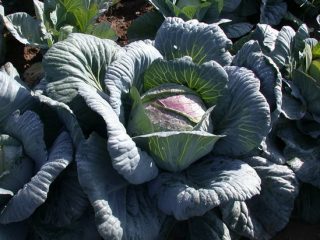Content
Cauliflower is called cauliflower because it is the inflorescences, not the heads, that are used for food. They are mostly white in color, although sometimes they come in other shades. But the name is associated specifically with the flowers.
Origin story
The history of the origin of the culture and its name is completely unknown. Its wild counterpart has never been found, perhaps the species has become extinct. It is believed that the culture came to the Mediterranean countries from Syria, so for a long time its name was “Syrian cabbage”.
The medieval physician Avicenna (11th century) wrote about the healing properties of the plant. A century later, the plant appeared in Spain, and later in Cyprus. In the XIV century. culture began to arrive in France, England, Italy and Holland.
It was brought to Russia under Catherine II, but initially it was grown only in the gardens of high-ranking officials. For a long time it did not take root well until varieties adapted to local climatic conditions were developed - their names:
- Domestic;
- Snowdrift;
- Station wagon;
- Sochinskaya and many others.

Cauliflower can be grown in most regions of Russia
Biological description and characteristics
Cauliflower, whose name refers to the inflorescences that are eaten, is a common vegetable crop from the cruciferous family (Brassicaceae). This is an annual plant that can be either spring or winter.
The roots lie close to the soil surface, which is why this system is called fibrous. The stems are cylindrical, reaching a height of 20 to 70 cm. The leaves are arranged horizontally or vertically, directed upward in a straight line or obliquely. They often bend in a spiral.
The type of leaf blades is varied - their names are: entire sessile, petiolate, lyre-pinnately divided. They have an attractive color - light green, darker and even bluish, with anthocyanin pigments.
The leaf blades are narrow, the shape is varied, its names are: truncated, oval, elliptical, lancet-shaped, obovate. They are very large in size, reaching from 20 to 90 cm in length. The petioles are also large - from 5 to 40 cm. A coating is noticeable on the surface, the name of which is a waxy layer. Depending on the variety, it can be either barely noticeable or very pronounced.
At the stage of bud formation, cauliflower produces dense flowering shoots. They are formed on the basis of the upper axils of the leaf rosette. Other forms produce a “head”, which is used for food. It is formed after the apical shoots begin to branch and twist strongly.
The inflorescence, whose name is the head, can be of different shapes - usually round, less often flat-round. The color is predominantly white, but can also be purple, yellow, or orange. In all cases, monochromatic. The surface has a pronounced relief, corrugated, with wrinkles. The name of the fruit is a multi-seeded pod, up to 8.5 cm long.The seeds are quite large, dark brown in color, up to 2 mm in diameter.

Cauliflower is often white, but comes in other colors as well.
Pros and cons of cauliflower
Called cauliflower, cabbage is generally more difficult to grow than traditional white cabbage. The inflorescences are much smaller than the heads of cabbage, therefore the yield per unit area is noticeably lower. Another drawback is that such cabbage cannot be used for pickling. Its taste is not so pronounced, although sometimes interesting nutty notes are noticeable.
Cauliflower also has its advantages:
- low-calorie product (25 kcal per 100 g) that can be used for weight loss;
- inhibits inflammatory processes;
- prevents cancer;
- suitable for the prevention of pathologies of the heart and blood vessels;
- improves brain functions;
- normalizes digestion;
- contains many vitamins and minerals, which improves metabolic processes in the body.
But to preserve it, the vegetable must be consumed raw. And to prepare for the winter, it is advisable to freeze it.
Why was white cabbage called cauliflower?
The reason for the name of this variety of cabbage has nothing to do with color. The fact is that, unlike the traditional cabbage crop, it is not the heads of cabbage that are eaten, but the inflorescences themselves. They are painted white.
Although sometimes there are other varieties with purple, green, orange, milky, and yellowish colors.

In Russia, it is the white varieties that are most often grown.
They are used to prepare various dishes and are consumed mainly in heat-treated form. You can also freeze - this type of inflorescence retains all the beneficial substances.
What is another name for cauliflower?
Cauliflower has other names. They originally come from the Italian word "cavolfiore", which translates to "cabbage flower". The equivalent in English is “cauliflower”. It turns out that the name is associated with the word “flower”, and not “color”. But in Russian these words have the same root, which is why there was confusion.
In Latin the plant is called "Brassica oleracea L." or "botrytis L." The reason is that it belongs to the botrytis varietal group. In a biological sense, this is a variety that is a variety of the cabbage species (Brassica oleracea). It also includes all other cultivated varieties, for example, white cabbage, Beijing, Brussels sprouts and others.
Conclusion
Cauliflower is called cauliflower due to the fact that the fused inflorescences are eaten. They contain vitamins, minerals, dietary fiber and other valuable compounds, so they can be used in the daily diet.








